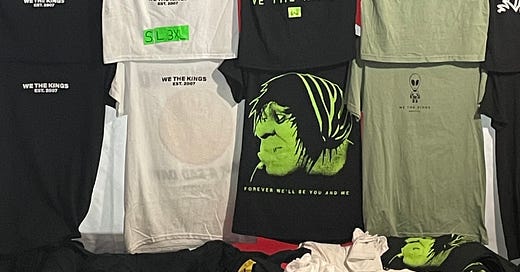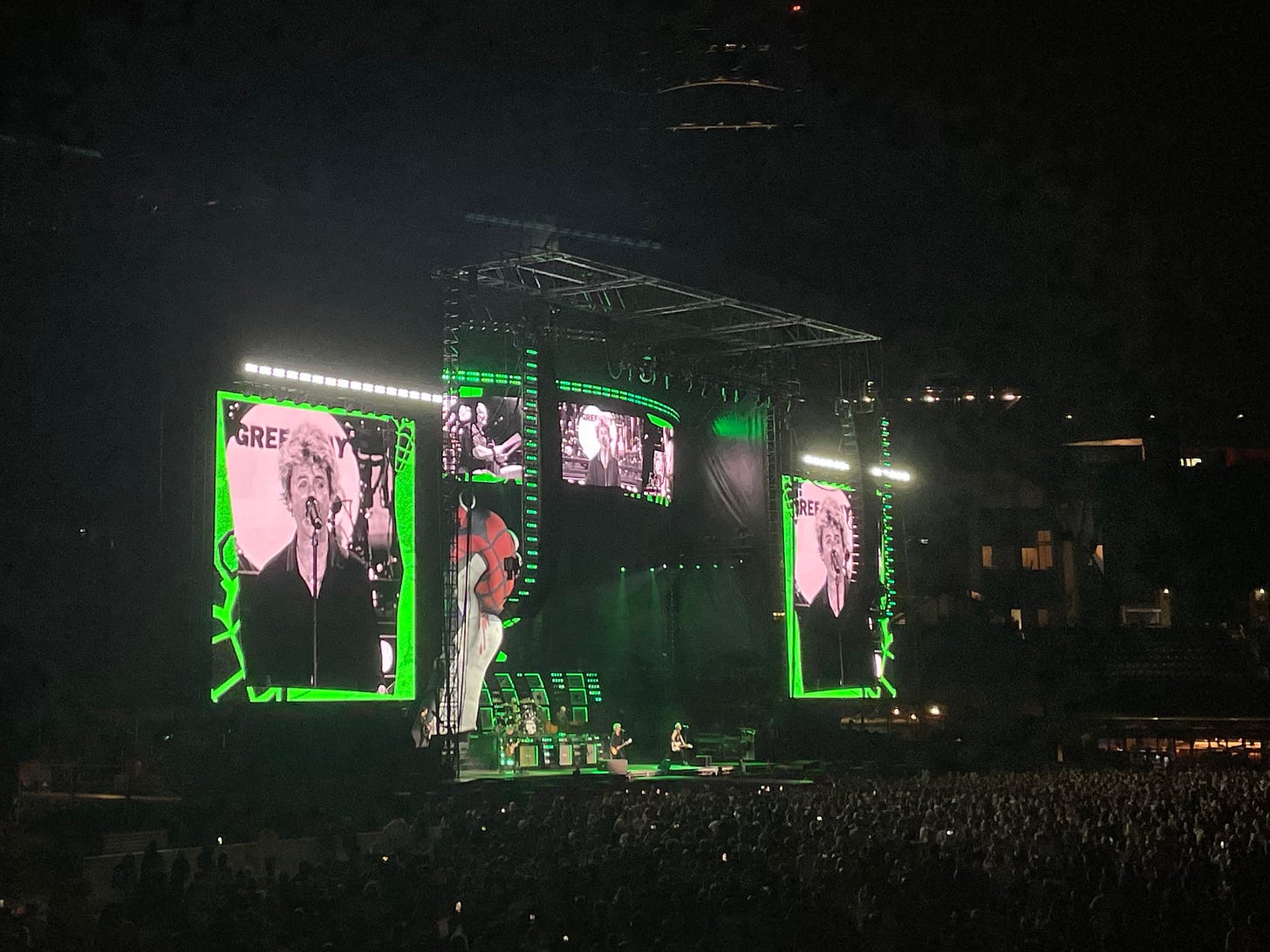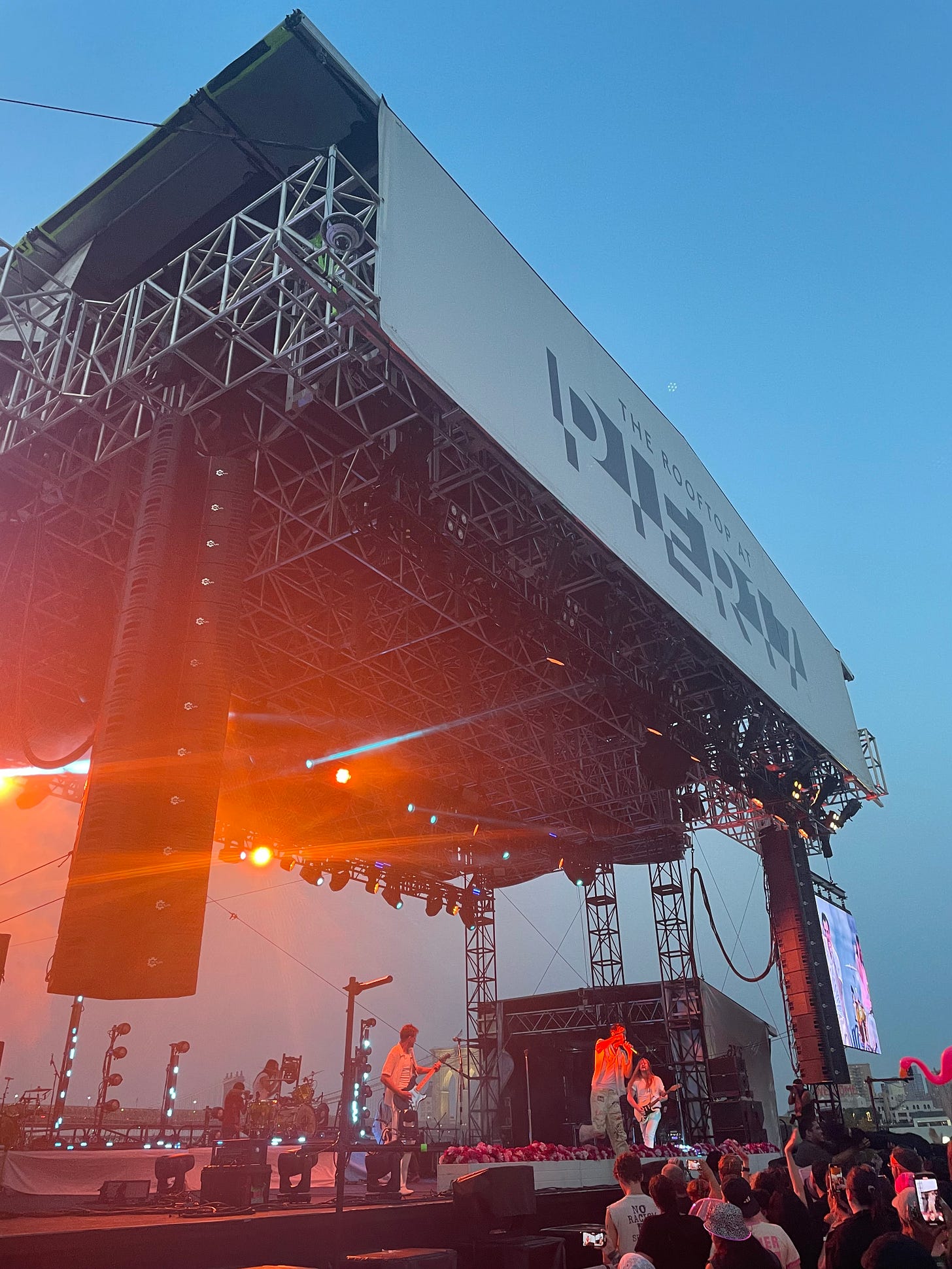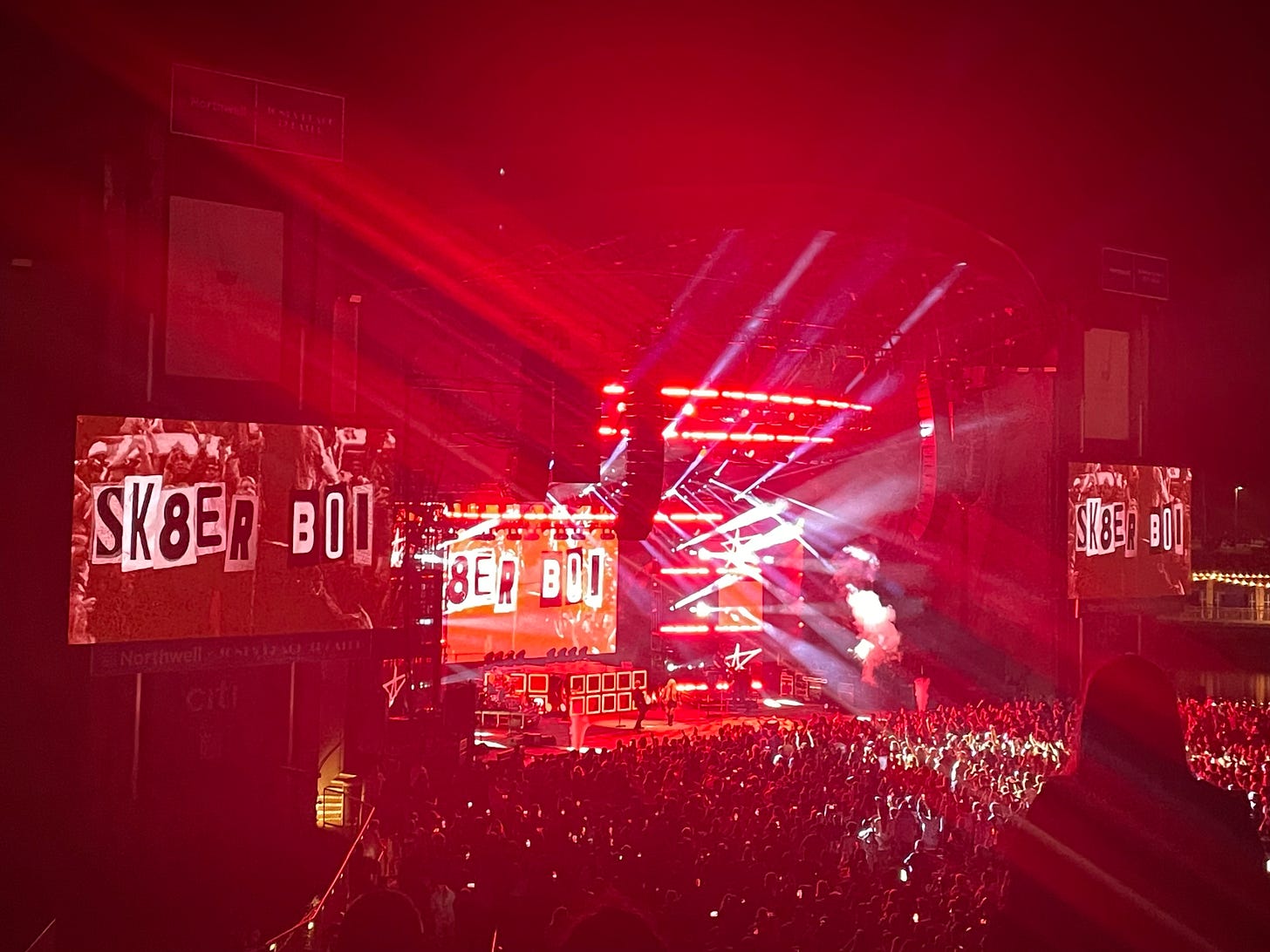My formal introduction to pop-punk happened when I was eight years-old, sitting on the floor of my childhood crush’s bedroom.
“You’re going to love this,” he said, holding up a CD he’d stolen from his older brother. The cover was red, black, and white featuring a fist holding an anatomical heart-shaped grenade and the PARENTAL ADVISORY sticker. Popping it into the boombox, we sat back as an angry little guitar riff kicked in. Our heads bobbed to the aggressive beat. And then came the lyrics.
Don't wanna be an American idiot
Don't want a nation under the new media
And can you hear the sound of hysteria?
The subliminal mindfuck America
For the uninitiated, I was experiencing the sound of legendary California punk rockers Green Day and their iconic protest rock opera American Idiot, which is somehow twenty years old this year. While I had grown up on a healthy dose of classic rock (you’ll remember me writing about it earlier this summer), this was the first time I’d heard music that was so angsty and rebellious and bad. Not “bad” as in unenjoyable or without artistic merit. Bad like Sandy after she buys leather pants in Grease. Cool and bad, if you will.
I wasn’t totally sure what this sound was, but I knew it was good. I also knew that I definitely wanted more of it and fast.
My computer time soon became dedicated to poking around iTunes. I typed in Green Day and scrolled down the page for the You Might Also Like section. Clicking on names such as Sum 41 and My Chemical Romance and Blink-182, I listened to sample tracks and purchased songs whenever I had gift cards or extra spending money. Those names led me to more names, then even more names, and so on and so forth.
The sweet spot for my ears, I found, was “pop-punk” with a touch of “emo”; what some people I knew jokingly call “horny, sad boy music.” That’s a little wrong given that Avril Lavigne plus women-fronted Paramore and Hey Monday also took up space on my iPod, but the overall vibe was true.
This stuff was not on trend. By the point I reached high school, critics thought the heyday of pop-punk was over. The charts were filled with EDM-influenced-pop tracks by Kesha, sultry sounds from Rihanna, and Jason Derulo repeating his name. A fresh, sexier era had arrived and it did not have colorful tattoos or piercings or a problem with the mainstream. But the sounds playing in my headphones said otherwise. I couldn’t connect with the popular stuff exploring partying and having wild sex. That stuff wasn’t happening in my young teenage life. Hell, that stuff wouldn’t happen to me…ever. But the groups that sang about feeling lost and hopeless and hurt? That was definitely familiar.
When I didn’t get asked out to school dances, I listened to Fall Out Boy’s “Dance, Dance” alone instead. When I felt overwhelmed with studying, “Everything is Alright” by Motion City Soundtrack almost convinced me that it might be. In between, I dreamt of the day that someone special would dedicate a true love song to me. “Check Yes Juliet” by We the Kings or “Your Guardian Angel” by Red Jumpsuit Apparatus or, most quintessentially, “All the Small Things.”
The only thing better than rocking out alone was going to concerts to jam with other fans. I sometimes skipped classes to attend gigs in New York and Albany, most especially if All Time Low or The Maine were coming to town. I spent a week in Boston for A Rocket to the Moon’s final shows, crying to my favorite songs live. I felt understood in a way I never had by my peers back home, and it was magical.
Which almost made up for the many moments during my coming-of-age when I felt super fucking sad. My situation wasn’t unique, clearly. There were lots of us out there getting bullied, having our hearts broken, feeling lost in our developing bodies, and dealing with crazy families. These emo bands had been there, too. They put the words floating around inside of our hormonal, overwhelmed minds to music. And those songs helped so many people out even if they never really hit the charts. In many cases, I think they saved lives.
My music taste has expanded (albeit slightly) since my teenage pop-punk days. But my horny, sad boi roots are no longer a dirty little secret, nor something I could forget. Especially not after this summer. Although I didn’t have the kind of cash that could take me to All Your Friends Fest in Canada—think Warped Tour, but for some reason with camping—I did manage to get to a decent number of emo shows where I saw lots of other people my age breaking out their black eyeliner, ripped denim, and vintage concert t-shirts to rock the night away with the bands that changed their lives.
My pop-punk jams make their way into my daily Spotify shuffle. It’s rare, though, that I stop my running around and really listen after sixteen years of the same playlist. But these concerts made me and so many other fans do just that: slow down and remember the lyrics that got us through the darker days. They made us grateful that our parents were wrong, that our emo tunes were not and will never be just a phase. And they also reminded me of a very important truth, that sometimes what you need if everything is going wrong is to hear the right song.
Rachel’s Weekly Recs:
We’re about two months out from Halloween, so let’s start decorating! I have long been obsessed with the Spritz Birds sold seasonally at Target. I think my favorite for fall is Pawson, a cat dressed up as a pumpkin. How meow-velous.
For my New Yorkers looking for something fun this holiday weekend, might I suggest renting rowboats in Central Park. For $25, you and a companion can set sail on the lake for an hour, taking in the turtles, ducks, and other wildlife. Perfect way to unwind with the madness of the summertime city.
The collaboration of the century has dropped! My queen Dolly Alderton has launched a line with English shoe designer Terry de Havilland that is heavily 1970s inspired. Check out the platforms here, including “disco” and “rainbow” designs. Definitely a splurge, but gorgeous all the same.









